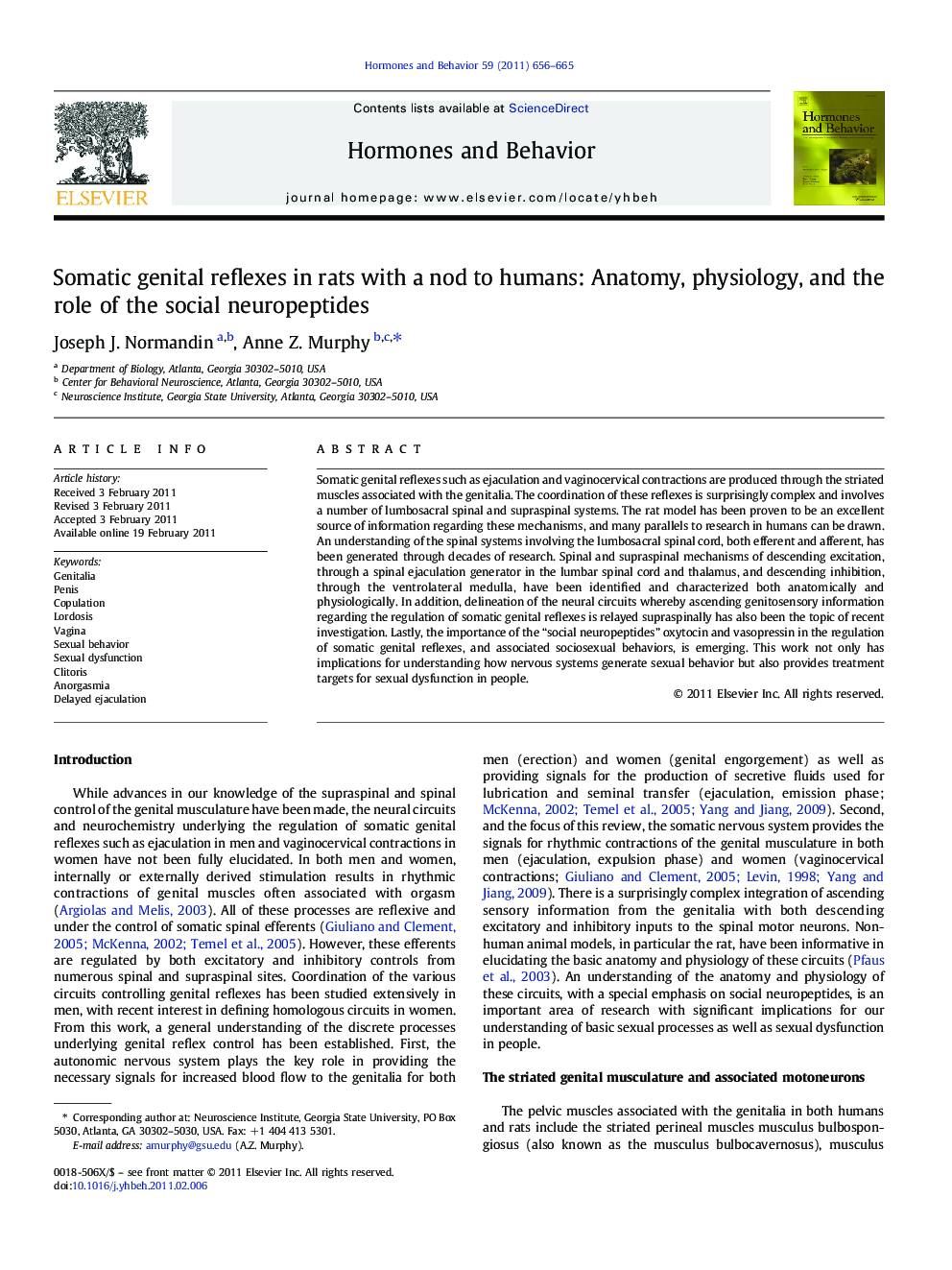| Article ID | Journal | Published Year | Pages | File Type |
|---|---|---|---|---|
| 322795 | Hormones and Behavior | 2011 | 10 Pages |
Somatic genital reflexes such as ejaculation and vaginocervical contractions are produced through the striated muscles associated with the genitalia. The coordination of these reflexes is surprisingly complex and involves a number of lumbosacral spinal and supraspinal systems. The rat model has been proven to be an excellent source of information regarding these mechanisms, and many parallels to research in humans can be drawn. An understanding of the spinal systems involving the lumbosacral spinal cord, both efferent and afferent, has been generated through decades of research. Spinal and supraspinal mechanisms of descending excitation, through a spinal ejaculation generator in the lumbar spinal cord and thalamus, and descending inhibition, through the ventrolateral medulla, have been identified and characterized both anatomically and physiologically. In addition, delineation of the neural circuits whereby ascending genitosensory information regarding the regulation of somatic genital reflexes is relayed supraspinally has also been the topic of recent investigation. Lastly, the importance of the “social neuropeptides” oxytocin and vasopressin in the regulation of somatic genital reflexes, and associated sociosexual behaviors, is emerging. This work not only has implications for understanding how nervous systems generate sexual behavior but also provides treatment targets for sexual dysfunction in people.
Research Highlights► Genital reflexes are regulated by supraspinal sites in a sexually dimorphic manner. ► Brain regions associated with sociosexual behavior receive genitosensory input. ► Oxytocin is an intermediary between genitosensation and genital reflexes.
